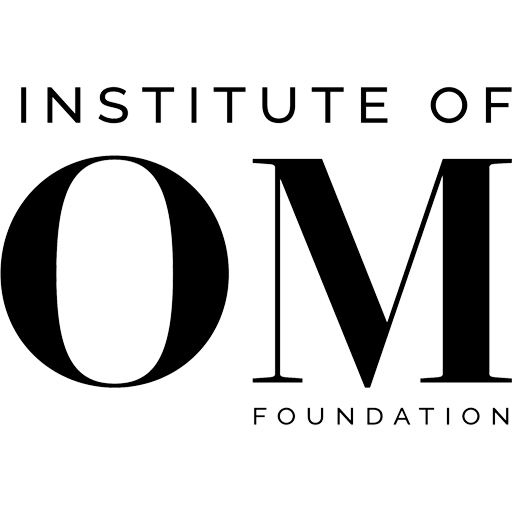#1: What is OM? A baseline EEG study of the mechanisms of OM
IRB approved
Physiological study with 260 participants
Dr. Nicole Prause, PhD and Greg Siegle, PhD at University of Pittsburgh
This is the first study in the U.S. since Masters and Johnson to focus on partnered stimulation. The study, using a total of 260 participants, monitored their physical and mental responses before, during and after the practice. It is the first study of its kind to use EEG and to measure both participants. In November of 2016, the study was approved by the Institutional Review Board (IRB) at University of Pittsburgh, becoming the first partnered stimulation study granted IRB approval. The study was completed in December of 2017. The results are currently being analyzed. Two peer reviewed papers have been published from this study thus far.
Researchers found statistically significant results in patients post OM that included:
- Increase happiness
- Reduce anger
- Increase closeness to self and others
- Increase amusement
- Lower anxiety
- Improve positive affect and decreased negative affect*
- Increase arousal
- In a secondary analysis of results, participants who reported early childhood sexual trauma were comparably more aroused than people who did not, contrary to most scientific literature
*the emotions or feelings that we experience and display
Based on the research completed by Nicole Prause and colleagues, OM may :
- Increased closeness in both romantic and non-romantic pairs
- A higher level of post-OM closeness was seen in non-romantic partners
- Closeness may be a result of sharing in a positive experience
- Benefits, such as closeness, may be more sustainable if you practice OM more frequently
- Closeness can be improved after just one OM
Publications
- Childhood Trauma: Effects of adverse childhood experiences on partnered sexual arousal appear context dependent | Sexual and Relationship Therapy 6/2/2021:
Connection: Partner intimate touch is associated with increased interpersonal closeness, especially in non-romantic partners | PLOS One 3/10/2021
#2: MEQ: Mystical Experience Questionnaire
IRB approved
Survey study with over 780 participants
Vivian Siegel, PhD of MIT and Ben Emmert-Aronson, PhD
Roland Griffiths, a Professor in the Departments of Psychiatry and Neurosciences at the Johns Hopkins School of Medicine, developed a 30 question “Mystical Experience Questionnaire”, or MEQ30, which provides a validated and quantitative measure of mystical experience. This survey is fundamental to studying and understanding the healing abilities of psychedelics at Universities around the world.
This questionnaire was used by Siegel to measure over 780 practitioners of Orgasmic Meditation with an age range from under 30 to over 80.
The MEQ measures four different aspects of the mystical experience: mystical (feelings of oneness); transcendence (loss of boundaries of time and space); ineffability (inability to put the experience into words); and positive mood.
Respondents were asked to recall their strongest Orgasmic Meditation experience and then complete the MEQ survey. Over half (62 %) of respondents scored “high” across all components of having a mystical experience questionnaire, which the Dr. Vivian Siegel described as a “complete mystical experience.” This is a level of mystical experience comparable to the maximum dose of psilocybin used in a 2011 study by Griffiths.
A follow up survey, of the same cohort of participants, was conducted where both OM practitioners took the survey immediately after practicing OM. In this survey, practitioner partners report a similar intensity of experience in the same session. The intensity of the session was reported by both ‘stroker’ and ‘strokee’. It was not dependent on being in one or the other position. Compared to the prior survey, that tested the strongest OM experience in a participant’s memory, this survey of an ordinary session of OM found that 23 percent of people scored a “complete mystical experience” which would be equivalent to the moderate dose of psilocybin used in the 2011 study by Griffiths.
In short, the results:
- There was a statistically significant result (62%) showing that people who practice OM experience a mystical experience when recalling their most powerful session.
- Johns Hopkins researchers have shown that psilocybin relieves depression in 60 percent of people who have a mystical experience when using it in a therapeutic context.
- The results of the MEQ study suggest that the practice of OM has similar benefits to the therapeutic doses of psilocybin.
Publications
Mystical Experience: Both partners practicing orgasmic meditation report having a mystical-type experience: results using the Mystical Experience Questionnaire | F1000 Research 7/22/2021
#3: Neurophysiological Correlates of Orgasmic Meditation using the PET/fMRI scanner
IRB approved
Physiological study with 40 people (20 pairs)
Dr Andrew Newberg, MD at Jefferson University Hospital
The overall goal of this study was to determine the neurophysiological correlates of Orgasmic Meditation (OM) as well as compare these effects to those of other meditation-based practices. By utilizing the PET-MRI scanner at Thomas Jefferson University, the most accurate neurophysiological data was obtained on the effects of Orgasmic Meditation.
Twenty pairs of people were studied, scanning both the ‘stroker’ as well as the ‘strokee’. Subjects initially had an intravenous catheter placed in their arm and then after approximately 15-20 minutes, began the OM practice. Half way through the practice, the individuals were injected with the radioactive tracer, 18F Fluorodeoxyglucose (FDG), in order to measure changes in cerebral glucose metabolism associated with the OM practice. Scans captured changes that occurred from the moment of injection during the OM practice. In addition, fMRI data was obtained to assess changes in functional connectivity and overall brain activity after the OM practice. The OM practice was directly compared to a “baseline” state in which similar movements and contact occur between the two individuals, but the actual practice and stimulation was not performed.
Quantitative analysis was performed on both the PET and fMRI scans to measure the physiological effects of the OM practice. In addition, several qualitative questionnaires were completed in order to assess the subjective intensity and quality of the experience. The primary aims were:
Aim 1. To evaluate the neurophysiological effects of OM on the stroker (giver) and strokee (receiver) using a combination of PET and fMRI, along with autonomic nervous system effects.
Aim 2. To correlate FDG PET and fMRI with the subjective effects that occur during OM.
IMPACT:
- First ever study to fully evaluate the neurophysiological effect of Orgasmic Meditation on the brain using FDG PET and autonomic activity, and how such changes relate to subjective experiences during the practice.
- First ever study to fully evaluate the neurophysiological effect of Orgasmic Meditation on the brain using fMRI and autonomic activity, and how such changes relate to subjective experiences during the practice.
The results of Orgasmic Meditation in this study revealed:
- OM is more akin to a spiritual experience than sex in the brain
- OM shows similar brain patterns to a psychedelic therapy experience
- Both cortex and limbic areas of the brain are affected in OM
- The brain changes observed during OM were similar between partners of both genders
- Both people had increased heart rate variability (HRV), an indicator of health, immediatly after OM
- Females showed significant activity in the brain similar to an “at one” experience found in other studies*
- Males showed significant activity in the brain similar to a“flow state” experience found in other studies**
Note: Dr Andrew is preparing a book based on this study.
*Definition of “at one” : in a peaceful state as a part of something else
**Defintion of “flow state” : state that is generally associated with effortlessness, focused attention, suspension thoughts creating a positive experience of pleasantness and intrinsic motivation. A sense of being alert while letting go.
Publications
Brain Physiology: Alterations in Functional Connectivity Measured by Functional Magnetic Resonance Imaging and the Relationship With Heart Rate Variability in Subjects After Performing Orgasmic Meditation: An Exploratory Study | Frontiers in Psychology 11/11/2021
- OM & PET, Dr. Andrew Newberg, submitted, in press
#4: OM vs. Sex Survey
IRB approved
Survey study with over 200 participants
Vivian Siegel, PhD of MIT and Benjamin Emmert-Aronson, PhD
More than 200 people who had personal experience with OM, sex, sitting meditation, and fondling responded to this survey, which asked them to describe and compare each of those activities. This study was IRB approved and contained a series of multiple choice, open field, and Likert scale, a commonly used scale to measure attitudes, knowledge, perceptions, values, and behavioral changes. scale responses. The hypothesis was that people would find OM more like meditation than sex or fondling*. The results showed that participants found OM to not be similar to sex.
*fondling was not pre-defined in the study. According to Merriam-Webster dictionairy, fondling is to touch (someone or something) sexually.
Publications
OM is not Sex: Is orgasmic meditation a form of sex? | F1000 research 3/20/2022

#5: OM and Sleep study*
IRB Approved
Survey study with over 40 participants
This is a small, independent-IRB approved study using advanced practitioners of Orgasmic Meditation as participants.
This research studied 36 experienced OM practitioners over 30 days and asked them to track their sleep throuh a phone app, as well as complete a survey on mood.
Preliminay results have shown signs of decreased sleep time, increased sleep quality and improved mood in participants who are practicing OM.
*Not yet published
#6: OM Benefits from OM Practitioner Journals *
An analysis of over 50 practictioners OM journal writings
This study looked at self-reported, written journals of OM from 50 practitioners. Of the 1,506 journal entries, 954 which were from ‘strokees’ and 522 from ‘strokers’ and the goal of this study was to investigate the technique of OM, the changes people report and the experiences people were having. This study was aimed at further understanding the potential physical and psychological benefits of Orgasmic Meditation.
The results were separate by roles played: stroker and strokee. Four themes emerged for both groups. The experiences reported in the journal study were unique to the roles played, there was no overlap of shared outcomes between the two cohorts.
The Stroker cohort reported:
- Connected with Partner
- Took Control of the Process
- Consciousness
- Post OM to feel: calm, relaxed and lighter
- Struggled with the OM process
The Strokee cohort reported:
- Opened Oneself to the Sensation
- Sense of oneness with the universe, themselves, and partner
- A Sense of Security
- Felt Freed

